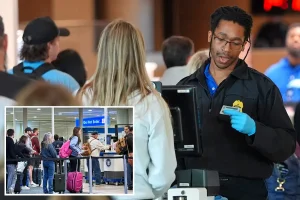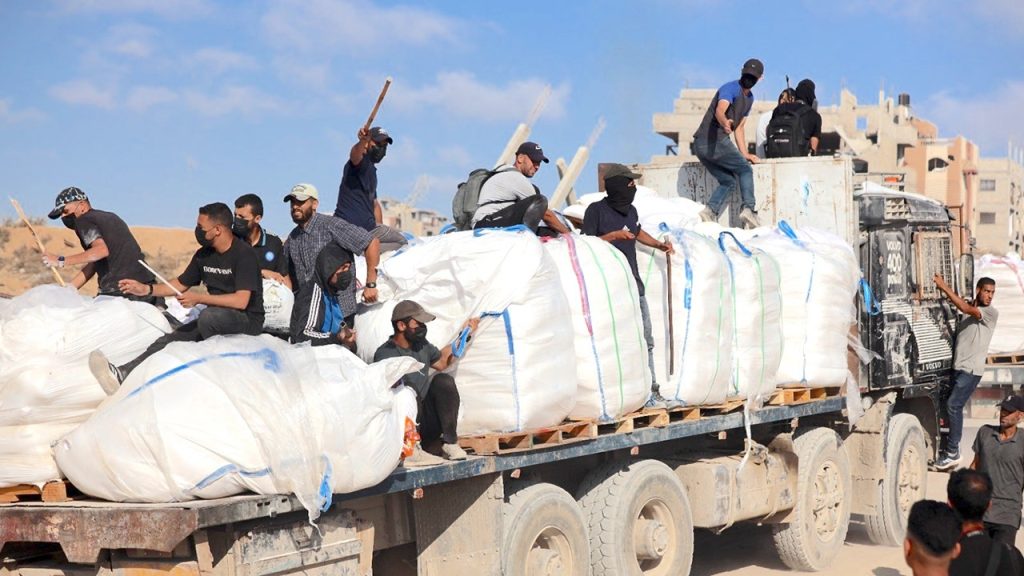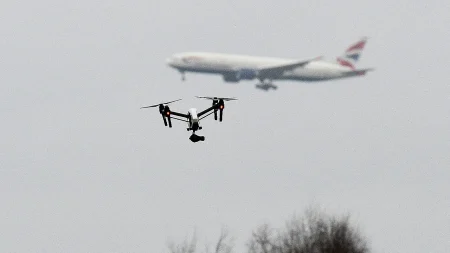Gaza Aid Delivery: Controversy, Challenges, and the Shifting Landscape
The delivery of humanitarian aid to Gaza has become a contentious issue with dueling narratives between Israeli officials and the United Nations. According to U.N. data, since May 19, an alarming 88.4% of aid trucks entering Gaza have failed to reach their intended destinations, with only 412 of 3,140 trucks successfully completing their deliveries. The remaining trucks were intercepted “either peacefully by hungry people or forcefully by armed actors.” This striking statistic has raised serious questions about the effectiveness of traditional aid delivery mechanisms in the region. Meanwhile, Israeli authorities through COGAT (Coordinator of Government Activities in the Territories) have challenged these figures, claiming the U.N. has undercounted aid deliveries by approximately 6,000 trucks. COGAT asserts that Israel has allowed about 9,200 trucks to deliver aid to Gaza in the last three months—2.5 times higher than the U.N.’s count of 3,500. “The fact that the U.N. presents only part of the aid actually transferred misleads the international community and creates a false picture of the situation,” COGAT stated, suggesting this discrepancy has serious implications for global policy decisions and media coverage of the humanitarian crisis.
Amid this statistical disagreement, the U.S.-backed Gaza Humanitarian Foundation (GHF) has emerged as an unconventional yet apparently effective player in the aid delivery landscape. Unlike many traditional humanitarian organizations, GHF employs armed guards to secure its distribution sites, a controversial approach that has yielded notable results. The organization reports providing between one and two million meals daily without experiencing the looting that has plagued other aid operations. Since beginning operations on May 27, GHF claims to have delivered over 130 million meals to Gaza’s civilians. “The presence of armed security is one of the reasons why GHF has been able to deliver aid successfully without a single truck being looted,” the group explained, characterizing their approach not as the “militarization of aid” but as “the only way to make sure food actually reaches civilians” in what they describe as “one of the most volatile and complex operating environments in the world.”
The humanitarian situation on the ground reveals concerning realities about aid delivery challenges. Chapin Fay, a GHF spokesperson, recounted visiting the Kerem Shalom crossing where he witnessed “flour rotting on the side of the road” and “medical supplies that had already expired” while dozens of fully loaded aid trucks sat idle for days. According to Fay, drivers waiting to deliver aid reported living out of their trucks for up to five days, and some were shot at by unknown gunmen when attempting to enter Gaza. These drivers, now “in fear for their lives,” have reportedly asked GHF to provide security for their trucks—highlighting the dangerous conditions facing those attempting to deliver essential supplies. The situation has created a significant bottleneck, with critical aid sitting just outside Gaza while civilians inside face increasingly dire circumstances.
The United Nations has maintained its traditional stance against armed escorts for humanitarian missions, with a UNOCHA spokesperson telling Fox News Digital that such measures can “undermine perceptions of humanitarians’ neutrality and independence” and should “only be used in exceptional circumstances as a last resort.” The spokesperson acknowledged the “extremely dangerous circumstances” in Gaza but did not directly address questions about aid diversion or drivers’ fears of violence. Instead, UNOCHA emphasized the need for “a predictable lifeline of aid via all available crossings” and “removal of the impediments we continue to face,” including checkpoint delays and restrictions on supplies and personnel. Despite mounting evidence to the contrary, the U.N. maintained that “we do not have evidence of systematic aid diversion from the U.N. to Hamas,” though a State Department assessment indicated that USAID’s Inspector General “is actively investigating credible allegations of systematic interference by Hamas in Gaza.”
Evidence continues to emerge suggesting Hamas is indeed diverting humanitarian aid meant for Gaza’s civilian population. An Israeli military official estimated that of the aid diverted from U.N. trucks, approximately 40% is taken by local communities and 60% by armed looters, though determining how much is specifically taken by Hamas is challenging since “Hamas is not a force wearing a uniform and identifying themselves.” COGAT has shared videos purportedly showing Hamas members looting aid packages and attempting to disguise themselves by affixing humanitarian organization emblems to their vehicles. These incidents have intensified scrutiny of Hamas’ role in exacerbating the humanitarian crisis. Law professor Orde Kittrie of Arizona State University characterized Hamas’ obstruction of aid as a violation of international law, specifically the Fourth Geneva Convention which prohibits “intentionally obstruct[ing] the passage of humanitarian relief, including food, to civilians in need.”
The Gaza aid controversy highlights a profound humanitarian dilemma with competing approaches to solving it. While traditional U.N.-led efforts struggle with aid diversion and security challenges, the GHF model with its secured distribution sites claims success in ensuring aid reaches civilians. This contrast has begun shifting attitudes, with Fay noting that over 200 international organizations have called for collaboration with GHF—a significant change from the initial rejection of their methods by many NGOs. The debate extends beyond mere operational differences to fundamental questions about humanitarian principles in conflict zones. As Kittrie observed, Hamas appears to be “intentionally starving their own civilians in order to leverage their suffering as a strategic information weapon against Israel,” presenting “an unusual, if not altogether new, type of violation” of humanitarian law. As the crisis continues, the international community faces difficult questions about how to effectively deliver aid while maintaining humanitarian principles in a region where traditional approaches appear increasingly inadequate.















